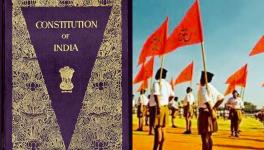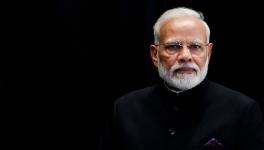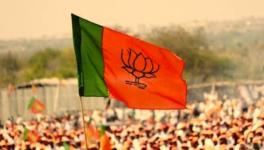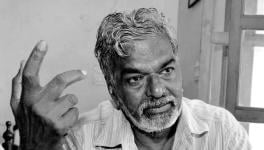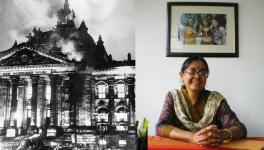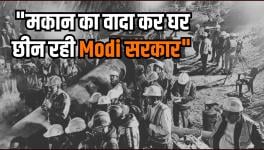Aug 14, 1947 and the Sengol Episode – Some Untouched Aspects
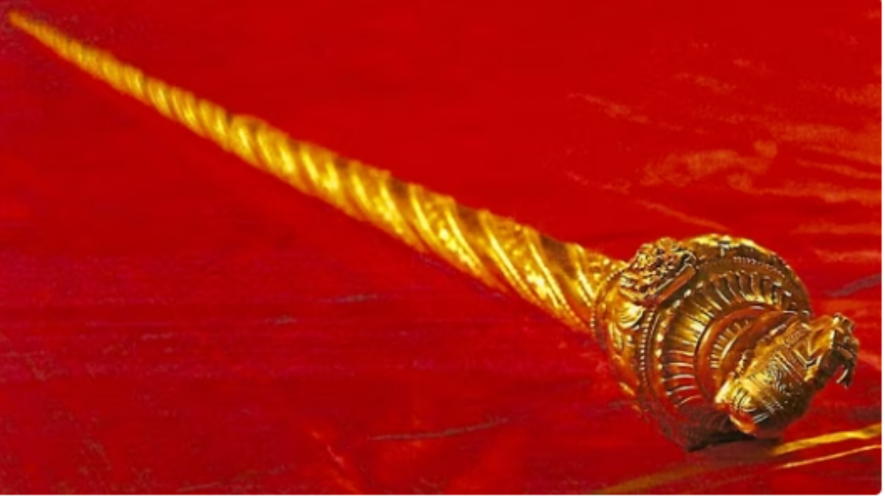
Sengol', a historical sceptre from Tamil Nadu, will be installed in the new Parliament building, to be inaugurated on May 28, in New Delhi. Image Courtesy: PTI
Last week, Union Home Minister and second in command of the ruling Bharatiya Janata Party (BJP), Amit Shah, was on a tour of Tamil Nadu. In a programme in Vellore, he said the Narendra Modi government had installed the Sengol in the newly constructed Parliament building, hence it was now the responsibility of the people of Tamil Nadu to win at least 25 parliamentary seats and put them in the NDA's account as a thanksgiving memorandum to the Prime Minister.
Perhaps, the 'intellectual advisors' of the Home Minister and veteran BJP leader did not inform him about the reality of Sengol in Tamil Nadu.
The Chola dynasty in ancient times was a dynasty that preferred brahminical values. The Sengol is the punishing symbol of the so-called royal justice dictated by that very mindset and thought process.
Even in today's modern democratic and constitutional era, the Sengol may hold some revivalist appeal for those who believe in the varnashrami (caste construct) and brahminical values of ancient times, but where is the place for these values in a society like Tamil Nadu, which has widely embraced Dravidian-ideology?
In fact, most of the Southern states, including Tamil Nadu, have been influenced by social reform movements inspired by different ideas. Probably, that's why there is not much interest in the old brahminical values in politics in these states, as seen in the Northern states.
Large parts of Kerala were influenced by saint-social reformers of progressive thought, such as Sree Narayana Guru and Ayyankali. Lingayat saint Basavanna had influence in Karnataka. The common people of Andhra and Telangana also historically do not seem to be in favour of 'brahmanical revival'.
In such a situation, it may be a figment of RSS-BJP leaders' imagination to think that people in the South will be influenced by the Chola dynasty’s 'brahmanical royal justice symbol'. This is far from the reality.
The way the Union government and the ruling party has propagated lies to install the Sengol in the new Parliament building is very regrettable and shameful for an elected government of a democratic country. This article would like to highlight some lesser-known facts of the ‘Sengol episode’.
It would be relevant to quote authors Dominique Lapierre and Laurie Collins, who did a lot of research on the process of transfer of power in India and the rise of independent India as a nation-state. They have put forth some solid facts on the Sengol episode in their well-known book Freedom at Midnight (1990).
It is important to mention here that the authors of Freedom at Midnight had also met the last British Governor General of India i.e. Viceroy Lord Mountbatten in the course of their research for the book. That is believed to be the last interview Mountbatten ever gave to any writer on the developments during the transfer of power in India.
This interview was recorded sometime in 1970 at Mountbatten's palatial bungalow in the village of Ramsey in southern England. (Freedom at Midnight, p. xiv). The authors wrote this book after a lot of hard work and extensive research. That's why the facts recorded in it cannot be challenged by people like some rumour-monger RSS (Rashtriya Swayam Sevak Sangh) journalists, some chartered accountant or Sanghi leader-propagandist.
There is a chapter in this book - ‘New Delhi, 14 August 1947’. In this chapter, there is a very interesting description of the programme of presentation of the so-called Sengol to Jawaharlal Nehru. It has no mention of Lord Mountbatten or any other British ruler anywhere.
First of all, it was not an administrative or government programme at all. To put it briefly, the book states that on August 14, 1947, this so-called royal gold-studded rod (chhadi) was presented to Nehru at his 17 York Road home in Delhi.
Since Nehru was about to take over the reins of independent India as the Prime Minister, a group of so-called sanyasis (saints) and brahmins from Tamil Nadu presented this decorated rod and other religious material (holy ash, holy water brought from Thanjavur and Pitambar etc.) to him. They must have definitely come to Delhi on the advice of someone close to Nehru, who would have asked these so-called sanyasis to meet him and present him all this.
Here is a brief excerpt from the above chapter in Freedom at Midnight:
“They sprinkled Jawahar Lal Nehru with holy water, smeared his forehead with sacred ash, laid their sceptre on his arms and draped him in the Cloth of God. To the man who never ceased to proclaim the horror the word ‘religion’ inspired in him, their rite was a tiresome manifestation of all he deplored in his nation. Yet he submitted to it with almost cheerful humility. It was as if that proud rationalist had instinctively understood that in the awesome tasks awaiting him no possible source of aid, not even the occult he so scornfully dismissed, was to be totally ignored.” (Page: 376-77).
However, Nehru gifted a replica of the said gold-studded sceptre to the Allahabad Museum, which presented to him by so-called hermits or priests. This is the story of Sengol in the forenoon of August 14, the day before Independence.
But, in the last week of May 2023, the Modi government, the RSS, the BJP and the so-called mainstream media of the country, especially ‘TVpuram’, hyped up the story of Sengol as if some great chapter of history, hidden for the last 75 years, had been discovered!
The truth, however, is that after 75 years of Independence, the BJP government has tried to replace the Constitution with a 'dynastic-brahminical symbol' like Sengol. In fact, it has tried to forcefully impose it on the country.
The functioning of both the Houses of Parliament is governed by their own rules and regulations, the basis of which is our Constitution. Then what is the meaning of installing a 'dynastic-brahminical symbol' like Sengol near the seat of the Speaker of a House. It should not be difficult for anyone to understand why this was done by the ruling party.
The writer is a senior journalist. The views are personal.
Translated from the original article published on our Hindi website.
Get the latest reports & analysis with people's perspective on Protests, movements & deep analytical videos, discussions of the current affairs in your Telegram app. Subscribe to NewsClick's Telegram channel & get Real-Time updates on stories, as they get published on our website.









